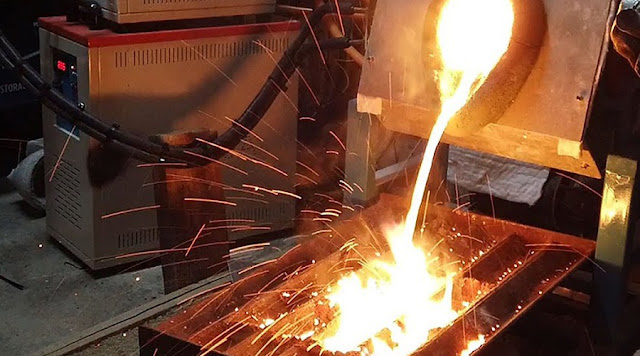Induction Furnace Cost Factors
Induction Furnace Cost Factors & Features
Due to their efficiency and versatility, induction furnaces have become a popular choice for a variety of industrial applications. These furnaces use electromagnetic induction to heat and melt metal, making them ideal for foundries, metalworking plants and other manufacturing facilities.
However, before investing in an induction furnace, it is necessary to consider the cost factor and understand its features.
Induction Furnace Cost Factors
One of the main cost factors to consider when purchasing an IF is its power capacity. The power capacity of an induction furnace determines its ability to melt metal efficiently. Furnaces with higher power capacities can melt more metal in less time, but they also cost more.
Therefore, it is critical to assess your production needs and determine the proper power capacity to avoid overspending on your furnace beyond your requirements.
Another induction furnace cost factor is the size . The size of a furnace affects its overall cost, as larger furnaces require more material and are more expensive to manufacture. Additionally, larger furnaces may also require more facility space, which may increase installation and operating costs.
Additionally, the type also affects the induction furnace cost. There are two main types of induction furnaces: coreless furnaces and tunnel furnaces.
Coreless furnace are usually more expensive due to their advanced design and higher efficiency.
These furnaces use a crucible surrounded by a conductive coil to induce heat, allowing precise temperature control and even heating. Slot furnaces, on the other hand, are simpler in design and often more cost-effective for small-scale operations.
In addition to the cost factor, knowing the characteristics of an induction furnace is crucial to making an informed decision. Induction furnaces offer several advantages, including faster melting times, energy efficiency, and cleaner operation. These furnaces can quickly reach higher melting temperatures, resulting in shorter cycle times and higher productivity.
In addition, induction furnaces are very energy efficient compared to conventional furnaces. The use of electromagnetic induction minimizes heat loss, ensuring that most of the energy is used to melt the metal. This efficiency not only reduces operating costs, but also contributes to a greener, more sustainable manufacturing process.
Plus, induction stoves provide a cleaner, safer work environment. Unlike other types of furnaces that burn fossil fuels or produce harmful emissions, induction furnaces run on electricity and are therefore environmentally friendly. The absence of combustion also eliminates the risk of toxic fumes and reduces the need for exhaust systems, further reducing operating costs.
In conclusion, when considering the purchase of an induction furnace, it is crucial to evaluate various cost factors such as power capacity, size and furnace type.
Additionally, knowing the characteristics of an induction furnace, including its efficiency, speed, and environmental benefits, can help you make an informed decision. By carefully evaluating these factors and characteristics, you can select an induction furnaces that meets your production needs while optimizing the cost-efficiency and sustainability of your manufacturing process.
You are welcome to pay attention to us, we will continue to share information about metal smelting furnaces such as IF, EAF, SAF, LF, and CCM.
If you have any needs, please feel free to contact us.
E-mail: saleswn@hanrm.com / inquiry66@hanmetallurgy.com (Daisy Zhai)
Tel / Whatsapp / Wechat: 0086 17791213533
Xi'an Hani Tech Co., Ltd.



Comments
Post a Comment